Written like a novel, this captivating story aims to provide insight and hope through the medium of entertainment.
Publisher Packet
Publishers: please feel free to download the printable Publisher Packet for reviews.

Wayne Douglas was born in South Auckland New Zealand and resides in Taranaki. He lived in Japan for eighteen years, working in local level international relations, education and translation. He felt compelled to write Under the Rising Sun following a life changing experience.
Top of Page
This COMPELLING true story is written in a novel-type prose with pseudonym names for actual characters.
It follows the central figure of likeable New Zealander, Shayne Davis: a former builders’ labourer, who after returning to school, embarks upon an international relations career in Japan, but is thrown completely of course after being wrongfully prescribed highly addictive drugs by a world-famous Japanese doctor.
His unforeseen journey sees him struggle to overcome a debilitating withdrawal. Still plagued by the aftereffects, he sets out on a course for justice, navigating the entire Japanese judicial system, against the doctor, hospital and their supporting networks.
The March 11 mega-earthquake, impending tsunami and Fukushima nuclear disaster causes him to write his Supreme Court appeal alone, while evacuating amidst radiation fallout, aftershocks and rotational blackouts; however, he never succumbs to any of the insurmountable obstacles that stand in his way.
A world leading psychopharmacology expert, Prof. Heather Ashton, makes a rare appearance in response to his plight and for the sake of a much greater cause worldwide.
Determined to raise awareness about the overprescribing of dangerous drugs, which is affecting millions globally, Shayne bides his time to make his final push before the story ends in a way that typifies his resolve…
Filled with intriguing scenarios, this book invites the reader on an epic journey and quest for answers, while considering some of the court-case puzzles and capturing life in Japan along the way.
This story received a full-length feature article in The Japan Times, 13 March 2012.
Top of Page
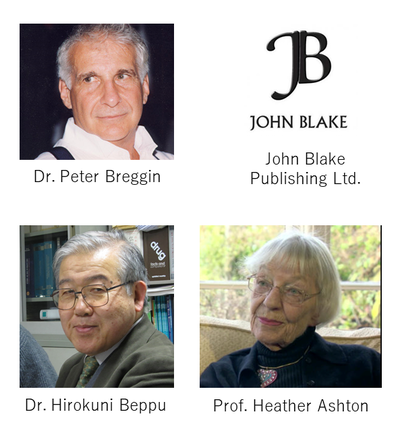
“It's a story among stories.”
Dr. Peter Breggin
World Leading Psychiatrist
New York, US
“Thank you very much for sending the proposal for Under the Rising Sun for us to consider at John Blake Publishing Ltd. I have passed it on to our editorial team who have considered it carefully. They believe that this is an incredibly interesting concept for a book and see a lot of potential in it...”
John Blake Publishing Ltd.
London, UK
“I can only imagine how difficult a court case in a foreign land must have been. Scenes from the movie ‘The Trial’ by Orson Welles come to mind. An exhausting, seemingly bizarre, lonely and unsupported battle I suspect…”
Dr. Hirokuni Beppu
World Renowned Doctor,
Medical Journalist
Tokyo, Japan
“Thank you for your very polite and thoughtful reply. I am afraid I was rather overcritical but you have taken it very well. Basically, I was just trying to be honest and hoping to promote your book as a best seller... However, I had forgotten that we did not ‘meet’ over the ether until your court case. Mea culpa - please forgive me. I confuse time and events these days. I feel as if I have ‘known’ you and your story from the beginning and have somehow identified myself with it...”
Prof. Heather Ashton
World Leading Authority in
Psychopharmacology, Newcastle upon Tyne, UK
Top of Page
- “Now it is all coming out well. You are fast becoming an accomplished writer… The book is very rich in all sorts of ways... I will certainly try to stay upright until you have written all the chapters for your book. I must live to hear the end. All best wishes, Heather”
- “Dear Wayne, Prologue, epilogue and Chap 17 all brilliant BRILLIANT!”
- “What you have the opportunity to write about is a real global tragedy, an epic of disaster including your own personal story that you have managed to rise above and overcome - perhaps aided by a stoical personality, tenaciousness and courage!
Top of Page
What Does this Book Offer?
- Endorsed: By Professor Heather C. Ashton (world leading authority in psychopharmacology).
- Original / Diverse / Historical: Drug dependency in a foreign country, entire Japanese judicial system, ISAM World Congress, government petition, captures life in Japan. Visits a moment in history, taking the reader into the Great Eastern Japan mega-quake and Fukushima nuclear disaster as it happened.
- Neutral / Provocative / Revealing: Refrains from judgement, controversial aspects told as they happened, uncovers hidden truths.
- Believable: Although some scenes may seem inconceivable, all events actually occurred with no dramatization.
- Relevant: Based on current social issue of global proportions affecting all ages / backgrounds.
- Entertaining: Written in a novel type prose, the story takes the reader on an epic journey.
- Intriguing: An intricate blend of law versus medicine with an element of the bizarre.
- Inspiring: Shows the enduring human spirit amidst adversity.
- Influential: Has the potential to influence society and the way people think.
- Special: Contributing to this book was the very last work carried out by Prof. Heather Ashton during her long-distinguished career.
- Epic: The single most common word people say when sharing this story.
Top of Page
To provide hope, insight and inspiration while saving lives and preventing costs to society through the medium of entertainment.
Top of Page
This book represents my life’s work. It also represents a lifetime of dedication and loving support from my elderly mother, who I’ve dedicated the book to, as well as the support from Prof Ashton who has kindly endorsed the book.
I returned to school at age twenty-three and worked tenaciously for thirty years, with very little rest, not resulting in the usual family home, career, security etc., one might expect, but instead a single book (and debt) – nothing else.
It also provides the opportunity to round everything off and get the recognition that the courts failed to serve.
Considering this, and the purpose above, seeing the book through to a successful conclusion means a lot to me.
Top of Page
THE WRITING
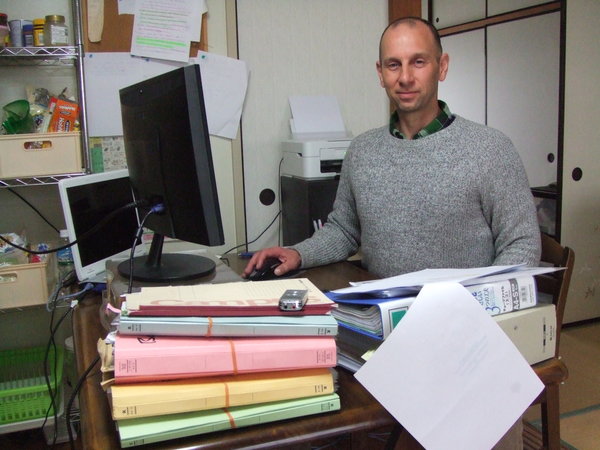
Writing in Fukushima evacuee housing (Japan) 2011 ~ 2017
Photo above: 51-chapter manuscript (bottom-right) together with study materials (about how to write novels) on top. Reference materials in foreground (excluding suitcase, boxes of court documents and thousands of e-mails referred to).
GENRE
Under the Rising Sun is a true story written as literary non-fiction / creative non-fiction (i.e. non-fiction writing that reads like a novel employing the same literary devices as fiction such as setting, voice/tone, character, plot development, etc).
PLOT (See Synopsis)
THEME
- Main theme: There’s a global epidemic and we’re all vulnerable, but we have the power to change.
- Secondary theme: Separate from the main theme above, the secondary theme is based on a life journey in The Land of the Rising Sun which is reflected in the chapter names. Reference is often made to the sun and earth, as well as to eclipses, hocus pocus, samurais etc. to conjure up feelings of sorcery and wizardry for creative purposes.
- There are also sub themes for each chapter (much like a sequence of mini stories).
NB: The main theme remains inconspicuous throughout the story, then towards the end, it bubbles to the surface, revealing an all-important underlying message (the purpose of the story).
VIEW POINT
To help create an entertaining read, the story is written in a novel-type prose with the main character appearing in the third person. The idea is to avoid sounding like an autobiography and to portray the story as if watching a movie for the purpose of reaching a much wider general audience. This approach also adds flexibility for ‘shifting the camera angles’ so to speak while allowing for a good balanced mix between narration, dialogue, characters’ thoughts etc.
STRUCTURE / LENGTH
The book is made up of six parts and a supplement written by Prof. Heather Ashton. Following the edit, it will likely consist of around 700 pages, across 50 or so chapters.
The story begins with background information preceded by the prologue which depicts a scene from the middle of the book to provide an element of suspense and anticipation for what is to come. The epilogue is a mirror image of the prologue, forming a complete triangle structure.
Part One moves through the background similar to a roller coaster heading towards the top of the tracks before the story really gets going on a course of twists and turns. The pace is varied, as it is in music or movies, with combinations of lulls and moments of high intensity and drama.
There are also multiple threads of interest sewn into the fabric of the story, such as how the lunches Shayne’s lawyer buys him get more extravagant as expectations rise, and how his way of addressing the defence changes over time.
As the dust settles, Shayne discovers thousands of others suffering similar fates in support groups online, resembling a scene where a battle-hardened warrior has stumbled across a burnt-out village of desolate and enchained people crying out in the dark. This is where the story goes out to sea, encompassing the greater problem worldwide.
The ending consists of multiple climaxes like a fireworks display – just when you think it’s over, there are a few more surprises to come.
STYLE
Both the prologue and epilogue appear in the present tense for aesthetic purposes. The main body of the book is written in the past tense; although, some parts are played out in the present tense (‘live scenes’), which are preceded by cues, to put the reader into the here and now, transporting them into places like the courtroom in real time. Scenes from the Great Eastern Japan mega-quake and Fukushima nuclear disaster are also played out in this way.
The book consists of narration, description (setting etc.), dialogue, characters’ thoughts (internal monologue), as well as brief snippets of letters, announcements (e.g. paging systems), similes, onomatopoeia etc. to keep the content varied and interesting. Periodic cues are used to give the reader a greater sense of time; e.g. Shayne’s Journey: Year 12.
There’s an additional voice, which makes occasional observatory comments, to put certain parts of the story into context from a medical point of view; however, these are limited to short infrequent para and are kept in sync with the overall flow of the story.
APPROACH
I wrote the first draft completely on my own to start. I did this to maintain a sense of originality as well as the integrity of the story. Then after completing the initial draft, I began studying how to write novels using online resources such as Novel Writing Help (I've also been receiving feedback from friends, doctors etc.). I am now using this newfound knowledge for my own personal edit in preparation for a professional edit yet to be organized.
Top of Page
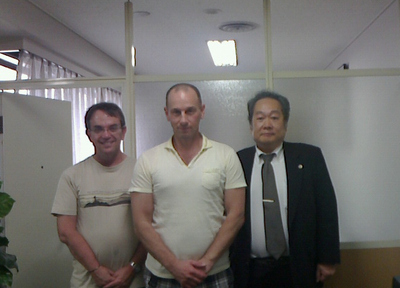
The Unusual Suspects
(Lawyer’s office − Ginza, Tokyo)
From left: Dr. Hudson, Alcohol & Drug Rehabilitation Specialist from Taranaki, NZ; Shayne Davis, ex-builder from South Auckland, NZ; Legal Consul Murai from Ginza, Tokyo.
Under the Rising Sun follows the main character of Shayne Davis (the protagonist). He is a quiet young man, but inside belies a belly of fire.
Legal consul Murai, is his leading ally. He is a chubby and astute fellow with a crop of hair resembling a short horsehair wig that attorneys used to wear (above photo post haircut).
He has a brazen personality which clashes with that of the supporting doctor from New Zealand, Dr. Hudson, who is kind, compassionate and sensitive in nature.
Shayne often finds himself caught between these two conflicting personalities while working between law and medicine across two different languages.
Then there’s the defendant doctor, Dr. Shibata. He is a typical old-school Japanese man: stubborn to the bone. Sitting on various medical councils and surrounded by teams of lawyers, he is an international authority in his own right and a force to be reckoned with.
The characters consist of the protagonist, major / minor allies, major / minor adversaries and other minor characters, totalling just over forty in all, excluding background extras.
As the story spans twenty-seven years, across chapters with differing themes, new characters are introduced, while some come and go, and others are phased out; however, the protagonist is always present.
Top of Page
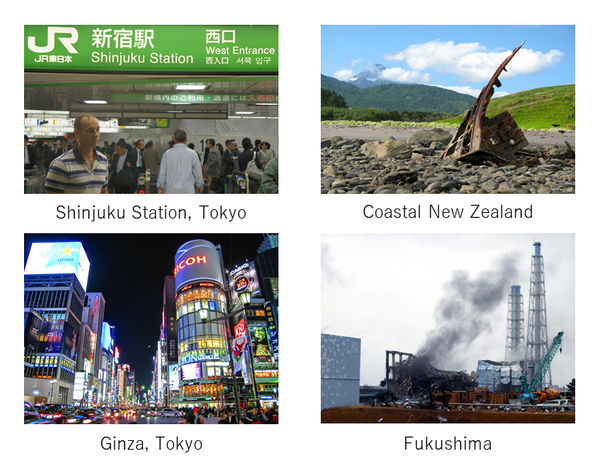
Shinjuku Station, Tokyo
Shayne rides the overcrowded trains into Tokyo. Entering the inner city, the wheels screech over the tracks − the view from the window consumed by the sight of steel, concrete and multiple shades of grey—.
After getting off at Shinjuku Station, the busiest terminal in the world, he navigates the maze of multilevel pathways and exits, wading his way through the masses, as he staggers to the clinic where he’s being slowly incapacitated by highly addictive drugs...
Coastal New Zealand (Mt. Taranaki / Oakura Beach)
- Setting for Shayne’s rehabilitation
- Film location for The Last Samurai
- Training ground for Sir Edmund Hillary
While in rehabilitation, Shayne spends time on the rugged Taranaki coast.
Stepping out over the hot black sand that characterises many of New Zealand’s west coast beaches, he nears the shoreline − the roar of the crashing waves grows louder, and the salty sea spray blows in off the surf.
He trudges along like a drunk in the cooler wet sand. Gazing around, his vision is still staggered − the English style houses nestled on the bush-clad hillsides in the background appearing in a sequence of snapshots, click - click - click—.
After several months, he recovers enough to pass beyond an outcrop of land to an old shipwreck washed up in the distant surf − nothing but hills, paddocks, tussock grass, and the native feather-like toitoi bushes to be seen.
One day, the usual sound of the crashing waves is interrupted by a thundering echo, as three black helicopters pass overhead. Watching the news later that evening, Shayne discovers that it was Tom Cruise’s film crew surveying the setting for The Last Samurai.
As filming gets underway, with Mt. Taranaki forming the backdrop for Mt. Fuji, Shayne continues his rehabilitation efforts by going for bushwalks on the other side of the mountain, totally unaware that he would one day have another chance-encounter with the title, The Last Samurai.
Passing over the same tracks that Sir Edmund Hillary once used as his training ground, Shayne finds himself immersed in the tranquillity of the native wilderness: moss dangling from the ancient treetops, their twisted trunks entangled with vines, native birds chirping as they flutter and dart between the branches, clear mountain water trickling over volcanic rocks, and the fragrance of the fresh flora ever present in the cool misty mountain air—.
Lawyer’s Office, Ginza, Tokyo
Several years later, while setting out on a quest for justice, Shayne returns to Japan finding himself caught up in the hustle and bustle of central Tokyo.
Every six weeks or so, he meets with his lawyer, Mr. Murai, in the upmarket district of Ginza. Walking from the station, Shayne is taken in by the internationally renowned department stores, stylish boutiques and expensive restaurants along the way.
He stops at Starbucks to prepare his notes before arriving at his lawyer’s office. In contrast to the extravagant surroundings, it is located in an older building, tucked discreetly away in one of the narrow side streets.
After taking the clunky elevator up to the eighth floor, Shayne is shown through to a small meeting room which is entirely consumed by two small brown leather couches either side of the doorway and a wooden coffee table in the middle. Family portraits of forebears, who founded the family legal firm, adorn the slightly nicotine stained walls.
Several scenes are acted out within these confines. Mr. Murai is a heavy smoker and there are numerous plays on this. One example is when they are preparing to leave for testifying in the Tokyo District Court: Shayne constantly glances down at Mr. Murai’s cigarette, which seemingly acts as a sandglass, counting down the minutes towards their much-anticipated departure—.
Fukushima
Shayne spends several years living in Fukushima before the Great Eastern Japan mega-quake and Fukushima nuclear disaster strike on March 11, 2011.
These scenes are played out in real time, taking the reader inside the quake, the nuclear power plant and the Prime Minister’s quarters as events unfold. ‘The camera’ switches between scenes of the unfolding disaster and Shayne preparing his Supreme Court appeal alone, without any representation (in Japanese), as he moves between evacuation points amidst aftershocks, radiation fallout and rotational blackouts − taking many notes by candlelight.
Other settings
Other settings include: numerous hospitals, Tokyo Summary Court (mediation), Tokyo District Court, Tokyo High Court, Supreme Court of Japan, and the evacuation housing unit where Shayne ends up biding his time to try and set things right.
Top of Page

How it might look on bookstore shelf
FRONT COVER
The rising sun represents an ever-increasing dependency on prescription drugs, not only in Japan, but worldwide. The white above is how things appear on the surface while many suffer alone in the dark below. The white contains shaded outlines of life altering drugs, showing that even those of us living on the surface are vulnerable.
In Japan, the sun represents good. So how can something good be associated with something bad? This paradox characterizes the government agencies and the medical industry.
The black and white also symbolises the concept of yin and yan, for where there is light, there is dark. Similarly, this plays on the Japanese sociological concept of hone and tatemae, or social front versus hidden truths.
REAR COVER
The rear cover makes a play on a case report (amendments pending) to introduce the content of the book.
Top of Page
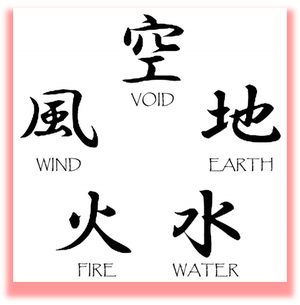
The Japanese elements: earth, wind/air, fire, water, void/spirit are also reflected in the chapter names. Chapters are subject to change.
Prologue: First Delivery
Part One: The Japan Connection
(1) Road to Japan, (2) Bridging Cultures, (3) New Horizons
Part Two: The Drug Dependency
(4) Turn for the Worst, (5) Hocus Pocus, (6) Enter Eclipse, (7) Partial Eclipse, (8) Total Eclipse, (9) Attempted Escape, (10) More Hocus Pocus, (11) Escape
Part Three: Breaking Free
(12) Withdrawal, (13) Road to Recovery, (14) New Dawning
Part Four: Seeking Justice
(15) Turning Point, (16) Testing the Waters, (17) Heading to Mediation: hanging in the balance, (18) Call to Action, (19) Continuing Mediation, (20) Reaching Verdict One, (21) Entering the Lower Court, (22) Regrouping, (23) Preparing for Testimony, (24) Testimony, (25) Hunkering Down, (26) Reaching Verdict Two, (27) Entering the High Court, (28) The Heat is on, (29) On Fire, (30) Smoke Screen, (31) The Samurai Within, (32) Reaching Verdict Three, (33) Ronin, (34) The Day the Earth Moved, (35) On the Move, (36) Supreme Court Appeal – Reaching Verdict Four
NB: The following chapters will be reduced during editing.
Part Five: Gaining Perspective
(37) Aftermath, (38) Void, (39) The Ashton Manual, (40) Reaching Out, (41) Fighting on, (42) Still Fighting on, (43) Time Out, (44) Unexpected Turn
Part Six: Making a Difference
(45) Going Public, (46) Applying for ISAM World Congress, (47) Preparing for ISAM World Congress, (48) Attending ISAM World Congress (49) Post Congress, (50) Government Petition, (51) End of a Journey
Epilogue: Final Delivery
Supplement: The Global Problem (prepared as educational supplement by leading professors)
Underlying theme: Separate from the main theme (see composition), the underlying theme of this story is based on a life journey in The Land of the Rising Sun which is reflected in the chapter names. Reference is often made to the sun and earth, as well as to eclipses, hocus pocus, samurais etc. to conjure up feelings of sorcery and wizardry for creative purposes. The distinct seasons of Japan are also drawn on, offering the reader an additional sense of time and colour.
Top of Page
OPENING PAGES (front matter)
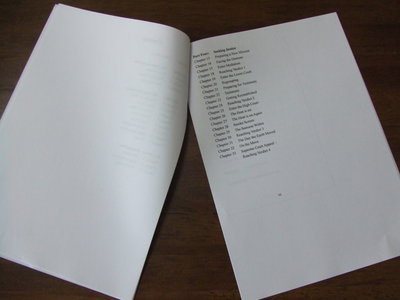
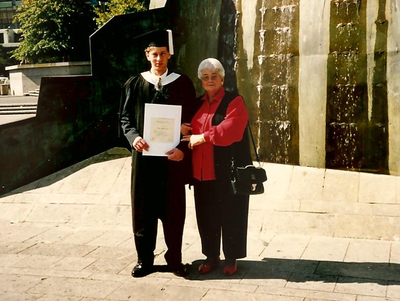
My mother and me on graduation day
I dedicate this book to my Mother in recognition of her selfless and loving support.
My mother is now eighty years old and lives in constant pain from multiple degenerative back problems and arthritis.
Several years after adopting my younger brother and me, she went through the pain of losing her own mother, followed by divorce, leaving her to raise two boys alone while fulfilling both parent roles.
Working as a full-time secretary during the day, she cooked at night, as well as mowed the lawns, fixed the car, redecorated the house and so forth on weekends. Somehow, she even managed to do volunteer work helping animals at the SPCA.
She was always there when we were sick, extending a loving caring hand. Following the recession in the late eighties, she helped me return to school, as an adult student, so that I could retrain in another field and then supported me through university where I majored in Japanese.
Despite the toll it had on her own health, she was there again when I went through the pains of prescription drug withdrawal.
After retiring, she did yet more volunteer work, as a member of victim support, helping people in the local Taranaki community.
My mother said that all she ever wanted was for us two boys to be happy. While hoping that this book will be successfully published, I would like to dedicate it to her as a show of gratitude and respect for all that she has done and been through.
Top of Page
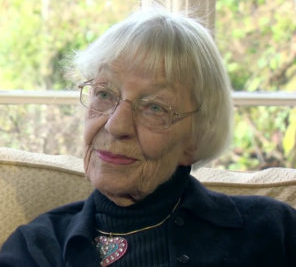
Benzodiazepines (BZs) are a class of psychoactive drug. They are the most commonly prescribed drugs for sleep problems, anxiety and stress. They are also prescribed for muscle relaxation, pain, depression, as well as off-label for many other conditions.
The first BZ was developed in 1956. They became widely available in the 1960s inspiring the famous Rolling Stones’ song Mother’s Little Helper.
Valium, Xanax, Rivotril/Klonopin, Librium, Ativan and Halcion are some of the more commonly known trade names among the vast number seen on the market today.
BZs can be effective in short term use (2-4 weeks), but many doctors are ill-informed, and they have been continuously over-prescribed worldwide for many decades.
Many people, experts included, claim that these drugs can be more addictive than heroin. They have many adverse effects and severe withdrawal reactions which can last for many months or years.
The problem of involuntary drug dependency on psychoactive drugs has become so common that no one is exempt from the effects on us all and the costs to society.
They have been associated with violent crime, suicides, domestic violence, unemployment and many other antisocial issues. Over or inappropriate prescribing to children and the elderly is also common.
The pharmaceutical companies have come to dominate the medical field, and it seems clear that today, it is money, not science, driving the industry. Despite government lobbying for improved controls in many countries, annual reports published by the International Narcotics Control Board and others show the overall consumption rates remain high worldwide.
This book is about a young New Zealand man who endures an involuntary benzodiazepine dependency in Japan following a complaint of acute dizziness. After withdrawal, he sets out for justice in his own case, and later, embarks upon a quest to help raise awareness on a more global level.
A true story, written in a novel-type prose, this book not only makes for an interesting read, but also provides us with an underlying educational perspective.
Heather Ashton
Emeritus Professor of Clinical Psychopharmacology,
University of Newcastle upon Tyne, England.
2 November 2015
Top of Page
The First Delivery
It’s a sunny spring day in Nagano, Japan.
Thirty-nine-year-old Shayne and his flatmates, Jason and Maki, are at home making lunch.
Located in a rural valley, their traditional Japanese two-storey house is surrounded by majestic snow-capped mountains and winding rivers.
Outside, the sound of birds chirping, water flowing through the nearby rice-field gullies, and the sight of the cherry blossom trees signals an end to a long cold winter.
“Grubs up!” yells Jason.
As they sit down to eat, the familiar sound of the Japan Post motorcycle is heard pulling up the driveway.
Suddenly, the front door slides open. “Haitatsu desu!”
“Oh, great timing!”
“Don’t worry mate, I’ll get it…” Shayne walks to the front door.
“I have a delivery here for a Mister Davis—.”
He signs for the parcel and opens it on his way back to the table.
“What’s that…?” asks Maki.
“Dunno, just looks like some books by the doctor…”
Still munching on some homemade pizza, Jason looks curious. “What does he say?”
Shayne rummages through the parcel. “Nothing…, there’s no cover note…”
♣
However, the message here was clear: BACK OFF! Who do you think you’re messing with?!
NB: Both the prologue and epilogue appear in the present tense for aesthetic purposes. The main body of the book is written in the past tense; although, some parts are played out in the present tense (‘live scenes’), which are preceded by cues, to put the reader into the here and now, transporting them into places like the courtroom in real time. Scenes from the Great Eastern Japan mega-quake and Fukushima nuclear disaster are also played out in this way.
Top of Page
Materials / Progress

Court documents and other references materials (mostly Japanese)
Resources that I used in composing the 51-chapter manuscript include:
- Court documents / evidence (see above photo)
- Medical literature, including The Ashton Manual (World Authority)
- Thousands of e-mails
- Diaries
- Writing materials (Novel Writing Help)
- Other reference materials
Top of Page
This book has come to represent a lifetime’s work, as it is built on life experiences spanning almost thirty years (since January 1990).
I started the actual writing in January 2012, spending four years on developing the draft, while living as an evacuee from Fukushima, initially surviving on food grants.
Writing tirelessly each day, while enduring tremendous environmental stress, and living on the breadline with constant threats to cut of essential lifelines, I went through three alpine winters in Nagano, without any heating, where the winters are about five months long with many days down to minus 10~15 degrees. Waking in the mornings, my nose was clogged with blood and my hands got zapping sensations whenever I touched or reached for things.
After taking a year out to do volunteer work and help others, I started the editing in January 2017. However, the Fukushima evacuee housing assistance ended in March 2017, and after three attempts at moving into civilian housing (twice in Japan), I still haven’t been able to secure a place, without distractions, that is suitable for writing a book of this complexity. This has left me in desperate need for a suitable place to complete the editing.
Top of Page
Most surprising of all, the high court relied on the packaging produced by the pharmaceutical company to determine the dosage at which benzodiazepines could be deemed addictive.
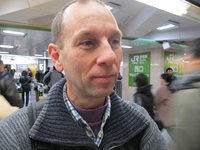
“I don't feel like I lost, I feel like I won and the court failed,” he says. “It feels like they were protecting the doctors and failed to protect society.” "What I want to do is use my experience and the material generated through my case to provide a resource to others who are dependent or may become dependent."







